| Review | Sino-German Symposium on Heritage Impact Assessment (HIA) |
| Author:WHITR-AP Shanghai PublishDate:2025-04-23 Hits:2039 |
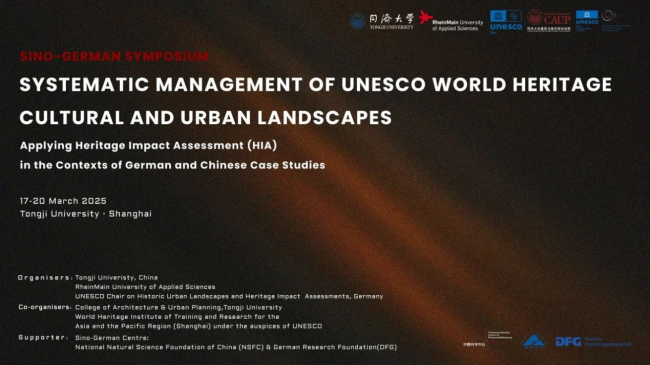 On 20 March 2025, the Sino-German Symposium “Systematic Management of UNESCO World Heritage Cultural and Urban Landscapes: Applying Heritage Impact Assessment (HIA) in the Contexts of German and Chinese Case Studies” concluded at the Wenyuan Building of Tongji University.
The symposium was jointly organized by the College of Architecture and Urban Planning at Tongji University, RheinMain University of Applied Sciences and the UNESCO Chair on Historic Urban Landscapes and Heritage Impact Assessments. It was co-organized by the College of Architecture and Urban Planning at Tongji University and the World Heritage Institute of Training and Research for the Asia and the Pacific Region (Shanghai) under the auspices of UNESCO (WHITR-AP Shanghai), with support from the Sino-German Centre (CDZ) - National Natural Science Foundation of China (NSFC) and the German Research Foundation (DFG).
The symposium brought together over seventy experts and scholars from more than twenty institutions, including RheinMain University of Applied Sciences, Brandenburg University of Technology Cottbus-Senftenberg, Technical University of Berlin, RWTH Aachen University, University of Antwerp, Trisakti University, the German World Heritage Focal Point, the Upper Middle Rhine Valley World Heritage Association, the Chinese Academy of Cultural Heritage, the China Association for Conservation Technology of Cultural Heritage, the Management Committee of Hangzhou West Lake Scenic Area, Tongji University, Fudan University, Beijing Forestry University, China University of Geosciences (Wuhan), East China University of Science and Technology, Guizhou Normal University, Zhejiang University, and Nanjing University of Posts and Telecommunications. Several participating institutions also organized online sessions for thematic discussion and observation.
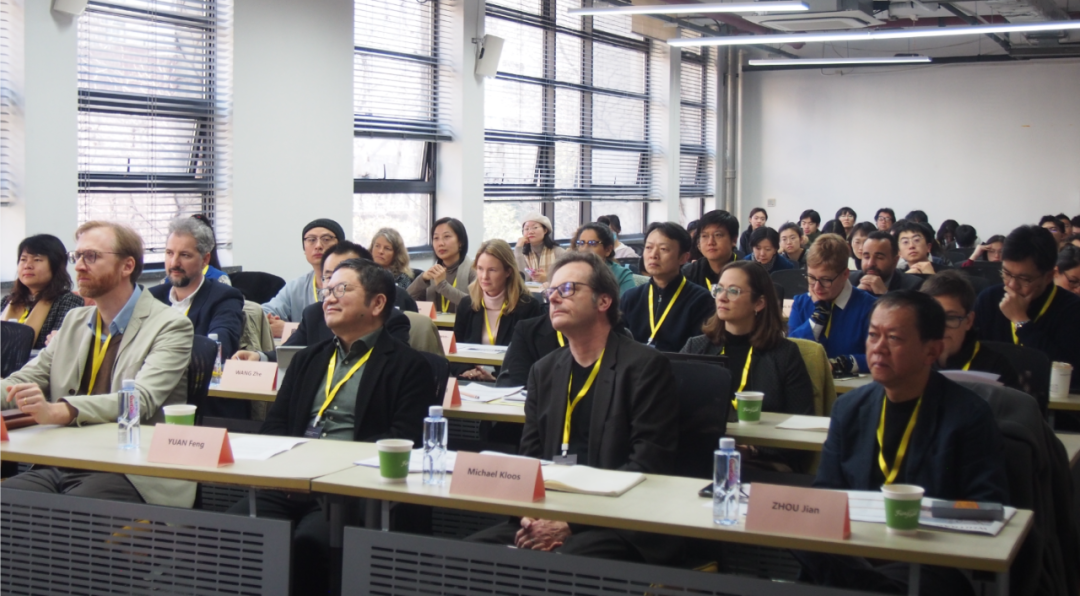 Opening and Keynote Speeches
The symposium consisted of collaborative sessions organized by Tongji University and RheinMain University of Applied Sciences, focusing on the systematic management of cultural and urban landscapes through Heritage Impact Assessment (HIA). Centered on the case studies of the West Lake Cultural Landscape in Hangzhou and the Upper Middle Rhine Valley, the programme included fieldwork at West Lake, thematic lectures on heritage values, HIA methodologies, and landscape management practices in China and Germany, concluding with a roundtable discussion to exchange insights and propose future strategies for cultural landscape management. Keynote Session The keynote session was moderated by Ms Marie-Noël Tournoux and featured four keynote presentations that explored the context, practical application, and recent challenges of heritage management and impact assessment from both Chinese and German perspectives. 1. Cultural and Urban Heritage Management in the Context of Urban Regeneration in China Speaker: Prof. Zhou Jian, College of Architecture and Urban Planning, Tongji University In recent years, China has shifted its urban development strategy from expansion-based growth to the optimization of existing urban stock. This transition emphasizes enhancing spatial quality within built-up areas while integrating cultural heritage conservation with improvements to public wellbeing. Since 2019, the state has strengthened territorial spatial governance by curbing land expansion, promoting the redevelopment of underutilized land, and incorporating ecological preservation and historical continuity into the public interest agenda. Taking the Bund in Shanghai and the historic city of Chaozhou as examples, heritage value has been reidentified through urban design strategies, and planning policies have been optimized, such as adjusting floor area ratios and coordinating building volumes, to facilitate the integration of new and old architecture and to revitalize historic districts. These efforts are accompanied by policies encouraging broad stakeholder participation, respecting residents’ voices, and guiding market forces to engage in urban renewal. For instance, the customized renovation of Old Street in Dujiangyan and the localized operation model in Chaozhou exemplify this approach. Today, urban regeneration in China increasingly focuses on ensuring baseline protections while proactively guiding development. By integrating heritage conservation with the enhancement of living standards and economic growth, a sustainable and iterative model of urban development is taking shape. 2. Management System and Monitoring of World Heritage Cultural Landscapes in Germany Speaker: Friederike Hansell, World Heritage Focal Point, Germany Effective management and monitoring are essential to safeguarding Germany’s World Heritage properties, ensuring their sustainability, and preserving their value for both present and future generations. In her presentation, Friederike Hansell illustrated the governance framework and operational procedures for cultural landscapes in Germany through concrete case studies. She outlined the key responsibilities involved in heritage management, the tools employed for monitoring, and the specific challenges faced in practice. Her insights underscored the critical role of structured oversight and adaptive strategies in maintaining the Outstanding Universal Value (OUV) of heritage sites. 3. Management and Monitoring of China's World Cultural Heritage: The Role and Significance of Heritage Impact Assessment Speaker: Wang Zhe, Senior Engineer, Chinese Academy of Cultural Heritage China’s World Cultural Heritage protection framework is grounded in the Law of the People's Republic of China on Protection of Cultural Relics, supplemented by a suite of specialized regulations. This legal foundation supports a three-tiered governance structure encompassing the national, provincial, and site levels. A comprehensive and decentralized monitoring and early-warning system—exemplified by the IoT-based monitoring of the Mogao Caves—enables real-time and adaptive site management. Heritage Impact Assessment (HIA) serves as a core mechanism, integrated throughout the project approval process. In the case of West Lake in Hangzhou, a joint review system has been employed to reject multiple proposals inconsistent with heritage protection goals, effectively balancing development and conservation. However, the standardization and broader application of HIA remain areas for further development. China’s integrated approach—combining legislation, planning, monitoring, and assessment—has gained international recognition and provides a systemic foundation for the sustainable conservation of World Heritage properties. 4. Education in Urban and Regional Conservation and Impact Assessments in Germany: Master Programme in Sustainable Heritage Conservation Speakers: Prof. Cristian Abrihan and Prof. Michael Kloos, RheinMain University of Applied Sciences In recent decades, an increasing number of large-scale cultural and urban areas have been inscribed on the World Heritage List due to their outstanding cultural and historical significance. However, these expansive heritage sites face mounting challenges in management and conservation, particularly under the growing pressures of urban renewal and development demands. Addressing these complex challenges requires forward-looking and systematic strategies that integrate innovative technological tools with value-based assessment frameworks, ensuring the effective protection of core elements that convey the site’s OUV. The opening ceremony and keynote speeches provided a comprehensive overview of cultural landscape management practices in both China and Germany, the evolving context of urban regeneration, and the current state of research and application of HIA. These discussions laid a strong foundation for the field visit to the West Lake Cultural Landscape in Hangzhou and the in-depth thematic exchanges that followed. Field survey: UNESCO World Heritage, the West Lake Cultural Landscape of Hangzhou
On 18 March, participants conducted a field survey of the UNESCO World Heritage “the West Lake Cultural Landscape of Hangzhou”. The itinerary included key locations such as the West Lake Museum, Xiaoyingzhou (Lesser Yingzhou Island), and Lingyin Temple. During the visit, participants engaged in in-depth discussions on the distinctive values of the cultural landscape and the practical experiences gained from its management. The visit provided a solid foundation for academic exchange on heritage value identification and impact assessment from a cross-cultural perspective.
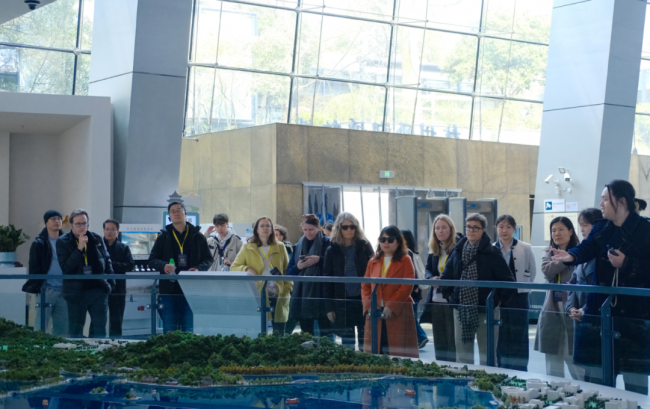 Thematic Sessions
Thematic Sessions focused on the identification of heritage values and attributes in cultural landscapes, systematic management and monitoring of cultural landscapes and the role of HIAs, methodologies for Heritage Impact Assessment (HIA), and diverse practices of HIA. Session 1: Identification of Heritage Values and Attributes in Cultural Landscapes This session focused on the interdisciplinary and cross-cultural methodologies for identifying the values and attributes of cultural landscapes. Prof. Du Xiaofan presented the development of the academic discipline and knowledge system in World Heritage. Merve Demiröz-Torun proposed a framework for value and attribute identification based on interdisciplinary technological integration. Xu Tong analyzed the recognition of cultural meaning in vernacular settlement with landscape as a methodology by a case study of the Ethnic Minority (YAO-瑶) Village in South China. Friederike Hansell shared experiences from Germany’s World Heritage value awareness training programmes. Farnaz Mohseni demonstrated the application of digital graphical mapping techniques of the Historic Urban Landscape. Zhang Yijin introduced practical approaches to the management of the West Lake Cultural Landscape. Prof. Han Feng offered a presentation on Heritage Values of the West Lake from Chinese Traditional Philosophical and Cultural Perspective. This session highlighted innovations in multidimensional, cross-cultural methodologies for the identification of heritage values. 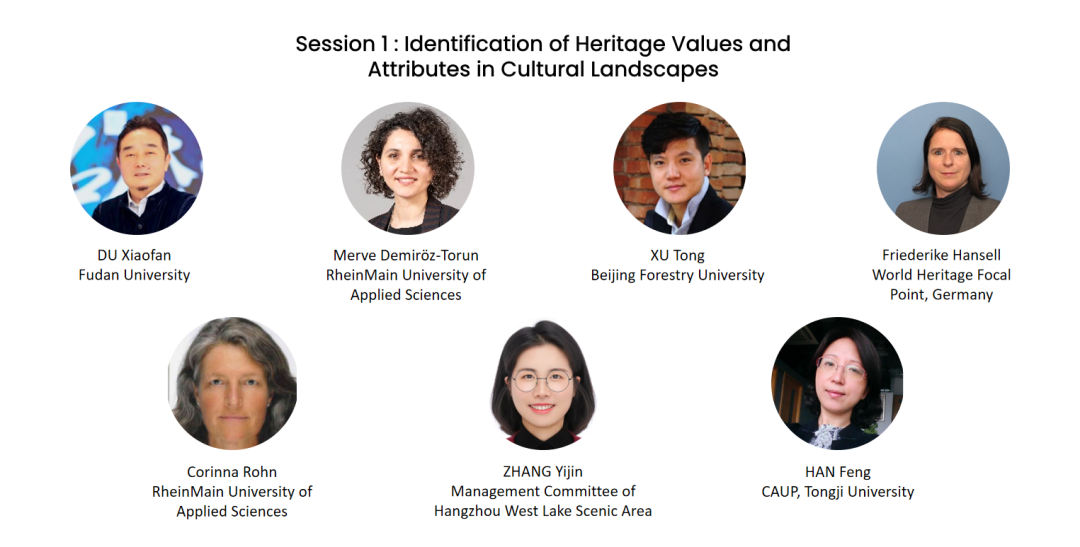 Session 2: Systematic Management and Monitoring in Cultural Landscapes and the Role of HIAs
In this session, Prof. Michael Kloos used the Upper Middle Rhine Valley as a case study to explain the application of intensive monitoring tools and mechanisms for maintaining the dynamic balance of OUV. Teng Lei traced the evolution of China’s HIA system, from alignment with international standards to localized standardization. Yang Chen proposed the development of a digital archival platform for Mount Lushan, aiming to facilitate the full-cycle management of heritage information. Prof. Didem Boyacioglu distilled key principles for the sustainable management of rural landscapes, emphasizing the integration of legal frameworks, financial resources, and capacity building through the example of cave communities in Turkey. Prof. Xu Qing analyzed the governance framework of West Lake through the lens of value, power, and interest within the community context. Muhammad Al-Absi advocated for the integration of HIA into buffer zone planning as a means to reconcile the tensions between conservation and development. This session underscored the transformative potential of cross-scale monitoring technologies, digital empowerment, and community engagement in advancing systematic cultural landscape management. 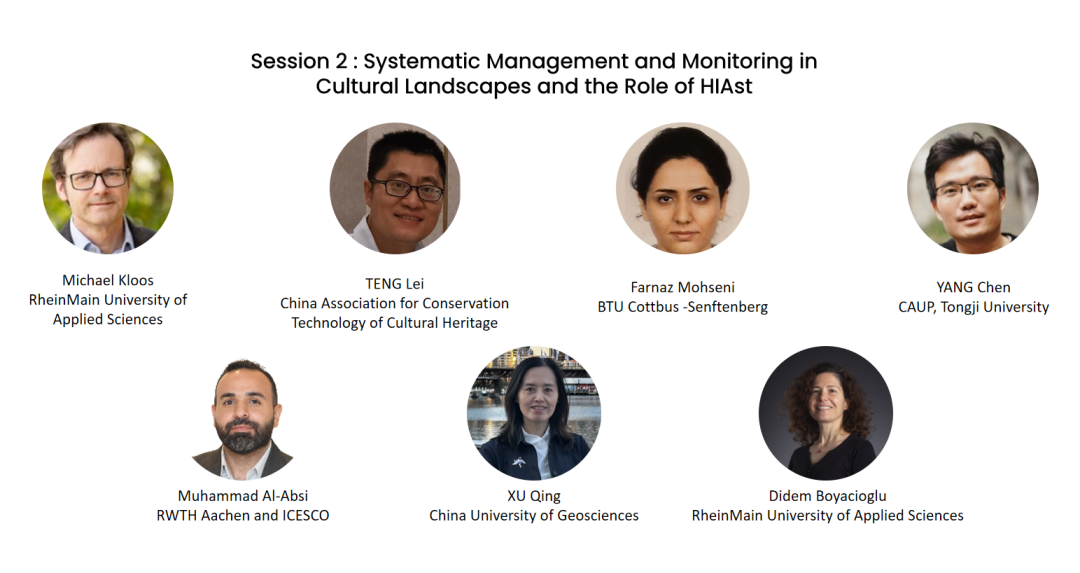 Session 3: HIA Methodologies
This session focused on innovative tools and interdisciplinary approaches for enhancing the resilience of heritage management through improved assessment methods. Taking the West Lake Cultural Landscape as a case study, Prof. Kou Huaiyun analyzed the indicators and methodologies for impact assessment of cultural landscapes. Baharak Ashrafi introduced a "Qualitative Impact Identification Matrix" to construct a methodological framework for HIA, examining the interaction between urban development factors and impact identification. Zhong Xiaohua explored the integration of collective memory and digital twin technologies in the context of community museum projects. Prof. Anne Bantelmann-Betz shared assessment tools used in Germany’s urban conservation areas, emphasizing the importance of adaptive protection of historic environments. Feng Yan presented practical experience from Wuxi, showcasing a dynamic visual landscape management system. This session highlighted how innovations in assessment tools and the integration of interdisciplinary technologies contribute to the resilient management of cultural heritage. 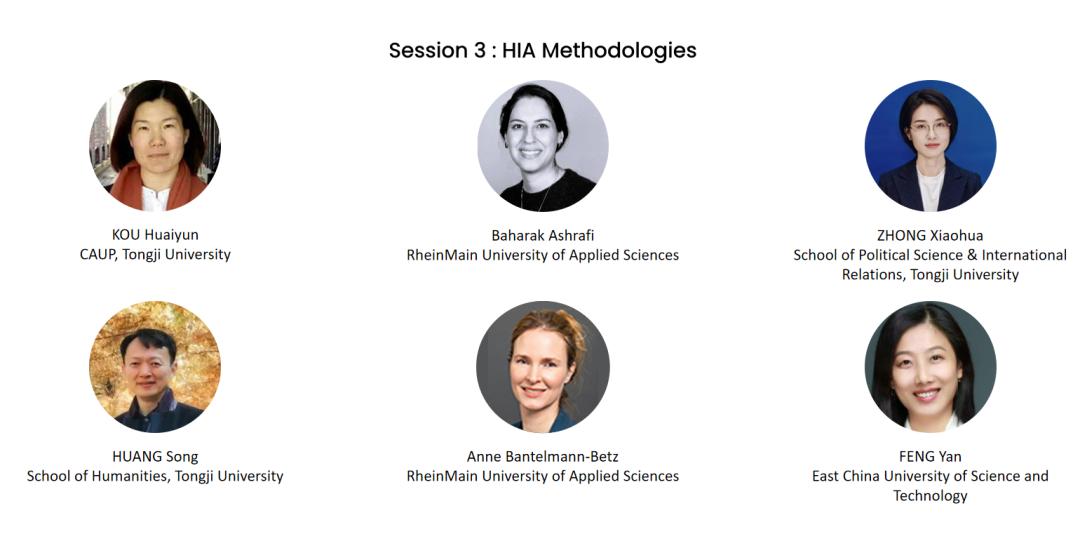 Session 4: Diverse Practices
This session highlighted a variety of case studies and methodological innovations in the practical application of HIA across different contexts and scales. Prof. Cristian Abrihan shared experiences in the digital management of cultural urban landscapes in Austria. Yang Wenjun advocated for a shift in China’s HIA strategies from tool innovation to institutional reform, proposing an integrated framework linking legislation, standards, and oversight mechanisms. Drawing on experiences from the Rhine Valley, Nadya König-Lehrmann emphasized the importance of periodic monitoring and community empowerment in collaborative heritage management. Prof. Yonca Erkan introduced a Web-GIS model designed to address the challenges of dynamic management across urban-rural transitional heritage zones. Punto Wijayanto analyzed the visual integrity impacts of tourism facility expansions near the World Heritage Site of Borobudur Temple Complex. Prof. Xiao Shizhen presented a case study of the Guinan High-Speed Railway traversing natural heritage areas, proposing a tiered mitigation strategy for linear infrastructure projects in ecologically sensitive zones. This session underscored the crucial role of technological iteration, institutional restructuring, and cross-scalar coordination in tackling complex heritage protection challenges. 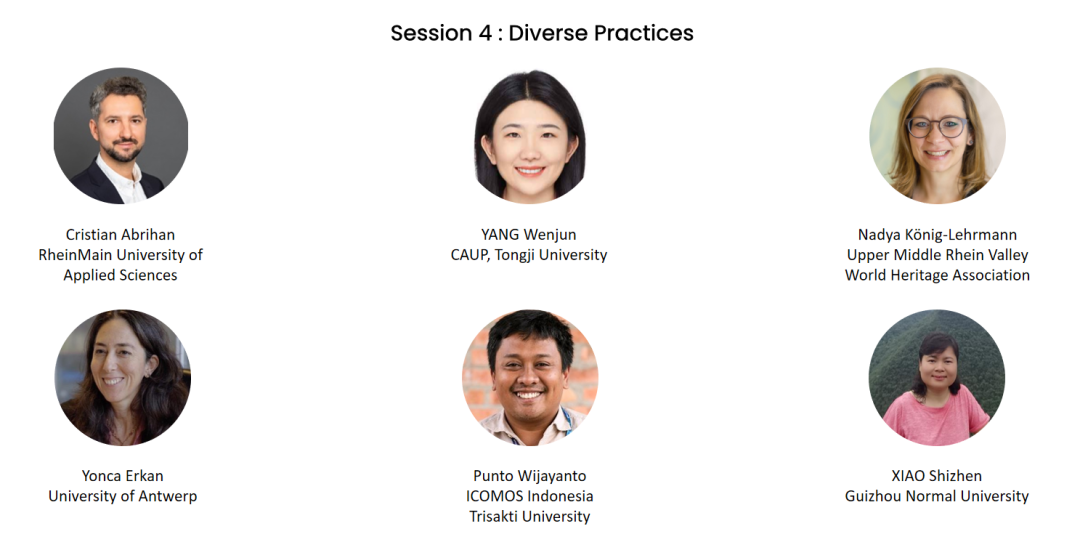 Round Table Discussion
The symposium concluded with a roundtable discussion, bringing together representatives from the four thematic session groups to exchange perspectives. Drawing upon insights from the field visit and academic sessions, participants reflected on several key challenges in bridging theory and practice in HIA. These included the spatial mapping of value attributes, the operationalization of SOC (Statement of Outstanding Universal Value) indicator frameworks, and the comprehensive integration of quantitative technologies in HIA processes. The session, co-moderated by Kou Huaiyun and Prof. Michael Kloos, also explored future directions for research on cultural landscape governance and heritage impact assessment. 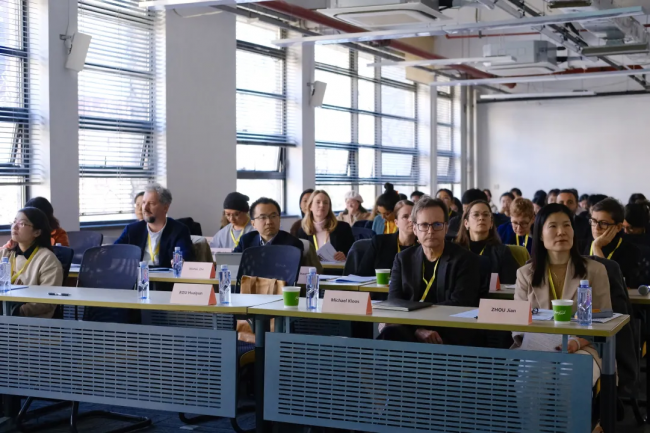 Contributed by Kou Huaiyun
Translated by Ye Minjun (Intern) Edited by Liu Zhen Reviewed by Shao Yong |
- Summary |2025 "Prosperity & Livelihoods" Good Practices recognized in Liangzhu, China—Jointly Mapping a path for integrating heritage and sustainable development
- News | Youth Innovation Brings Heritage “Alive” in the Present
- News | WHITR-AP Shanghai Contributed to the 2nd HIA Training
- News|WHITR-AP Shanghai Participated in the MONDIACULT 2025
- Call For Good Practices | World Heritage Contribution to SDGs
- News | 2025WHV - Ripple Action: Youth Innovation Camp in Lijiang
Copyright © 2009-2012 World Heritage Institute of Training and Research-Asia and Pacific (shanghai)


